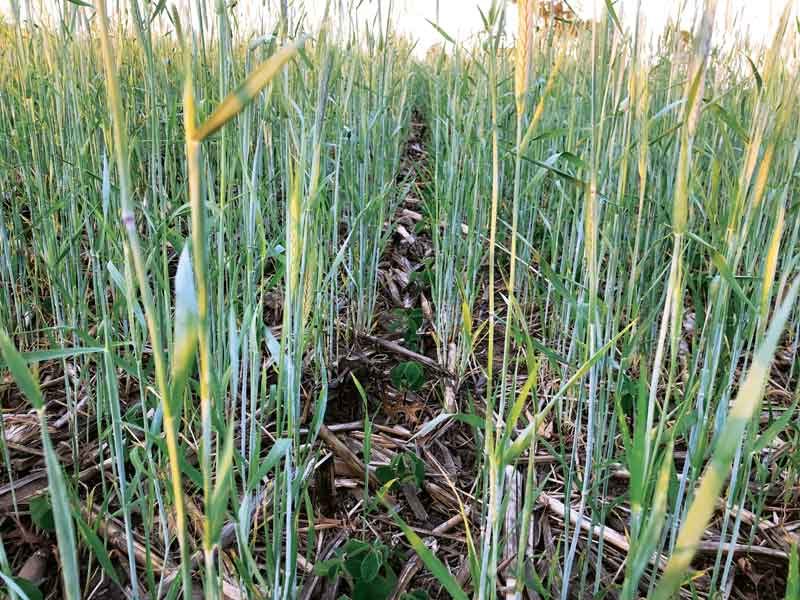No-Till Farmer
Get full access NOW to the most comprehensive, powerful and easy-to-use online resource for no-tillage practices. Just one good idea will pay for your subscription hundreds of times over.

PEEK-A-BOO. Soybeans no-tilled in May emerge between rows of cereal rye at an early June field day in Palmyra, Wis. The cereal rye was seeded in the fall to test the weed-suppressing capabilities of planting green.
For independent research agronomist Jim Stute, the appearance of glyphosate-resistant giant ragweed, waterhemp and marestail on his East Troy, Wis., farm was alarming. But it was also an opportunity — an opportunity to test the ability of cover crops to suppress marestail and other troublesome weeds and reduce reliance on glyphosate
“The problem with these weeds is that they’re prolific seed producers, they have a wide window of emergence and they’re highly out-crossing, which means they crossbreed,” Stute says. “So you can do everything right on your farm, but if resistant pollen blows in from your neighbor’s farm, you can suddenly end up with a resistance problem.”
In the fall of 2020, Stute set up randomized complete block plots in four locations with the objective of evaluating the effectiveness of no-tilling soybeans green into a VNS (variety not stated) cereal rye cover crop in terms of suppressing weeds. Enlist soybeans were planted in all locations and treatments.
For the trial, he established six treatments: